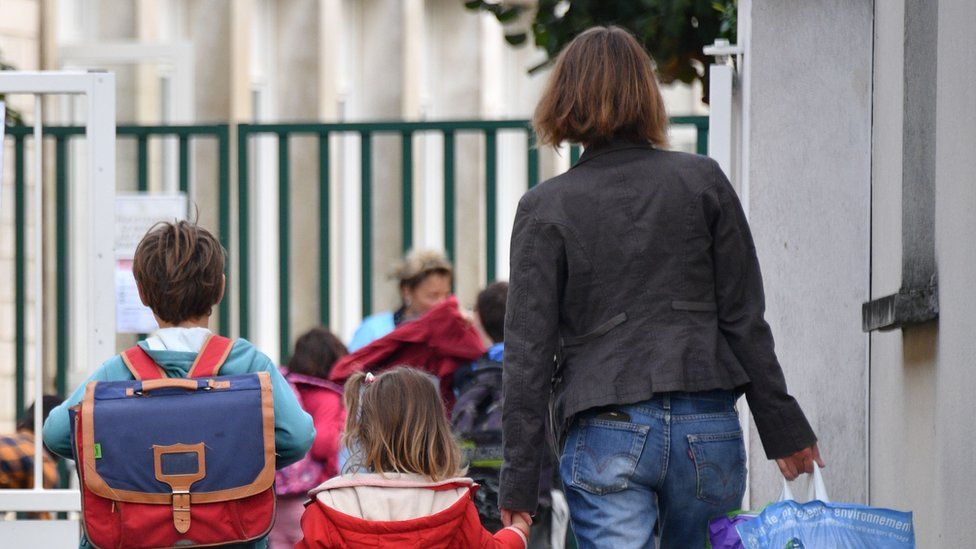Big rise in number of working mothers
- Published
- comments

There has been a big rise in the number of working mothers in England over the past two decades, figures show.
The Office for National Statistics (ONS) says 4.9 million women were working last year while looking after children - up 1.2 million since 1996.
Back then, 62% of mothers with dependent children were in work, either full- or part-time.
Now, 21 years on, the employment rate among this group of mothers in England has risen to 74%.
There has been a particularly big jump in the employment rate among mothers with children aged three or four, from 56% to 65%.
ONS spokeswoman Emily Glastonbury said the continued rise in the number of working mothers had been a "major feature" of the labour market in England.
"Reasons for this might include more flexible working practices, shared parental leave and changes to government policy on the availability of childcare," she added.
Among the other findings of the ONS were that:
- in 2017, 72% of families with both a mother and father present ("couple" families) had both parents in work
- Where this was the case, fathers were usually working full-time, while most mothers worked part-time
- The rate of part-time working among fathers with young children (aged three or four) rose from 3.9% in 1997 to 6.9% in 2017
- Single parents were less likely to work than parents in a couple.
The ONS found that, currently, 72% of single fathers and 69% of single mothers are working, while the employment rates for fathers and mothers in a couple are 93% and 75% respectively.
The figures, looking at men and women in England aged between 16 and 64, were estimates based on two surveys - the Labour Force Survey and the Annual Population Survey.
- Published14 May 2017
- Published25 June 2015